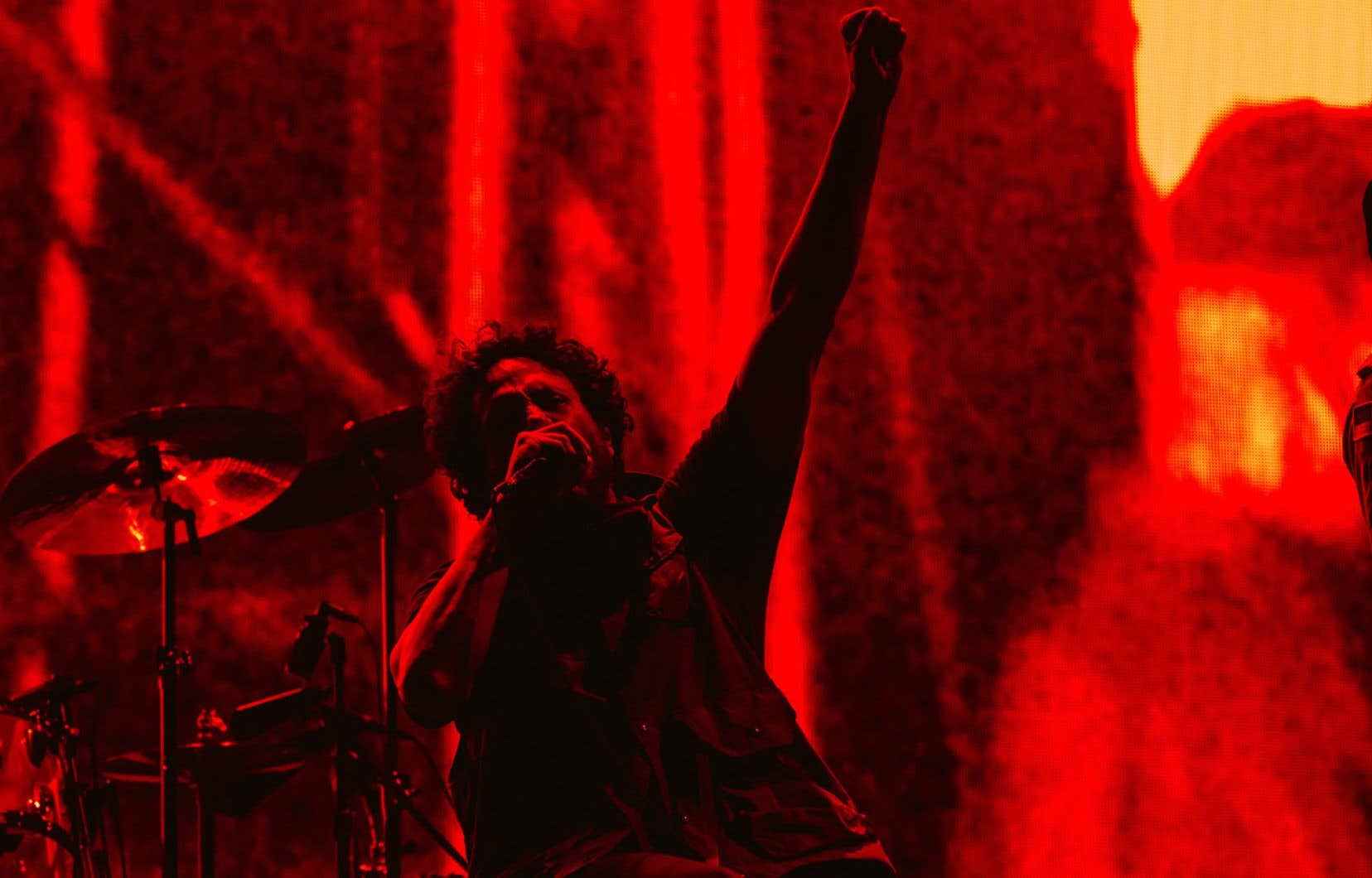Crossed on the Plains of Abraham, Olivier still regretted not having taken time off from his job as summer camp counselor in August 1996 to go to the Verdun Auditorium to see Rage Against the Machine. A friend had a ticket for him and had even offered to drive him there. He waited twenty-six years before living his redemption thanks to the Festival d’été de Québec, which last night welcomed one of the most coveted groups on the festival circuit, back, in force and with aggressiveness, more than twenty years after his last tour. Even with a crippled singer, the Californian quartet thundered, calling on the crowd to stand together in the face of the threat “of the richest on earth collaborating with the most vicious on earth” to steal our rights.
Shortly before noon yesterday, it was reassuring to hear Rage Against the Machine performing its sound check in the distance, Zack de la Rocha’s voice crossing the plains alone. Reassuring for fans and the organization of the festival, who were thrilled to learn that at the first concert of the world tour dubbed Public Service Announcement Tour, last Monday in Chicago, the singer Zack de la Rocha had injured his foot during the fourth song, forcing him to continue the concert seated on a stage monitor. Was he going to be able to offer his concert at the FEQ?
Sitting on a box for 90 minutes right in the center of the big stage, he succeeded, even if sometimes, often during a Tom Morello solo, de la Rocha looked like a boy in punishment. This notorious stage beast, forced to immobility? Not really able to dig in the head like all of us, tens of thousands of wild spectators, following the funky and boring rhythms of Brad Wilk (drums) and Tim Commerford (bass)? Fortunately, his companions compensated for his reduced mobility.
The concert got off to a flying start (for Zack, from a wheelchair) with Bomb track of the famous first album (1992), followed by two bombs ofEvil Empire (1996), People of the Sun and Bulls on Paradeits particularly muscular funk metal groove set with Morello’s first solo, which will be repeated during a masterful interpretation of Bullet in the Head, strumming the strings of his guitar with his incisors. The Plains of Abraham had been taken over by festival-goers from the end of the afternoon, the group attracting what, at the time of the balance sheets, will probably be the biggest crowd success of this edition of the festival. .
Before the end of the first verse of Bomb track, a mosh pit had already formed at the foot of the stage. Except perhaps for the resumption of The Ghost of Tom Joad by Bruce Springsteen (whom the band has been doing live for 25 years), fans pretty much knew every one of the band’s furious refrains by heart, and howled them with a mixture of fury and joyous nostalgia. There is obviously not much joy in the texts of Rage Against the Machine, emblem of militant and protest rock, but this so powerful way of offering his often austere songs (in the text, not in the rap groove -funk-metal) galvanized the public, several old fans like Olivier rehashing memories and perhaps still dreaming of a fairer world.
Words and music are inseparable in Rage Against the Machine. Throughout the concert, images projected on the giant screen: an El Paso city law enforcement van in flames during this gigantic version of Testify (from the album The Battle of Los Angeles, 1999), a border agent holding a German shepherd on a leash, a Latino child hitting a pinata bearing the likeness of a US Immigration and Customs Enforcement (ICE) agent. Some other songs didn’t require any visual input to be understood: when de la Rocha hollers rapping ” We’ve got to take the power back / No more lies the crowd responds by echoing him.
In opening, Guillaume Beauregard of the group Vulgaires Machins – the group offered a dazzling performance, after eleven years of absence on a stage of the Capital – had this reflection about their song Triple Murder and Failed Suicide (from the album love evil, 2002). According to official data, he told us, the suicide rate in Quebec has not gone down since the original recording of the song, “so it was useless”. The punk band sang it anyway, along with a dozen others from their necessary repertoire.
This question arises again hearing the midshipmen of the Californians serve Know Your Enemy, denouncing war, authority, elite, assimilation, ignorance, hypocrisy, thirty years after recording it. In the finale of this impeccable and explosive concert (Tom Morello remains one of the strangest and most imaginative guitarists of his generation), Rage Against the Machine obviously shot Killing in the Namea song inspired by the assassination of Rodney King in March 1991 and the riots that occurred in Los Angeles the following year after the acquittal of the police officers involved.
Thirty years later, the name of the victim has changed, but the indignation and the injustice remain, recalled Zack de la Rocha between Freedom and Killing in the Name, while on the giant screen paraded calls to return the land to the First Nations: this return to the stage, this tour, is to, all together, “express our frustration about everything that is happening in this moment in the world”. Famous concert, necessary call for solidarity.
